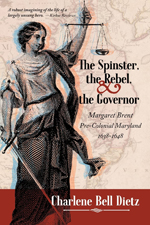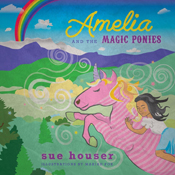Jodi Lea Stewart is the author of four historical fiction novels for adults as well as an award-winning contemporary young adult trilogy (Silki, the Girl of Many Scarves). The Gold Rose (Progressive Rising Phoenix Press, February 2023) is her newest historical fiction release. You’ll find Jodi Lea on her website JodiLeaStewart.com and her blog, on her Facebook pages at jodi.lea.stewart and AuthorJodiLeaStewart, and on Instagram and LinkedIn. Read more about her writing in her 2021 interview, visit her YouTube channel, and go to her Amazon author page for all her books.
 The Gold Rose “is an international, clandestine rescue agency that operates under the auspices of a special group of people dedicated to fighting oppression wherever and whenever it rears its ugly head.” What sparked the story idea for this novel that is classified (according to Amazon) as Crime Action & Adventure, War & Military Action, and International Mystery & Crime?
The Gold Rose “is an international, clandestine rescue agency that operates under the auspices of a special group of people dedicated to fighting oppression wherever and whenever it rears its ugly head.” What sparked the story idea for this novel that is classified (according to Amazon) as Crime Action & Adventure, War & Military Action, and International Mystery & Crime?
Since The Gold Rose is historical fiction, and because I wanted to place my characters in numerous places around the globe in the late 1930s through the early 1950s, I had no choice but to include what was happening politically and militarily during those years. Strangely enough, I was not a lover of history, especially war history, when I was younger. Now, because of the type of novels I love to write, I immerse myself in the history of wherever I place my characters. You might say I’ve been on my own personal journey of character development, proving that one must always be receptive to change. Winning a first-place award for War Fiction recently almost blew my mind, to be truthful.
Whose story did you find more enjoyable to write, that of Pinkie, of Babe, or of Charlotte, the agent tasked with saving the other two? Was one plotline more challenging to write than the others?
Honestly, I lived out every minute detail about Pinkie, Babe, and Charlotte. My desire was to show female characters defying the odds of whatever life throws at them. To make their journeys even more remarkable, I placed each of them in unusually susceptible positions.
For Pinkie, what can scream vulnerability more than a little two-year-old alone on an old country road during a storm, in shock, escaping a tragic scene? Who would find her? What lay ahead? I wasn’t going to let her trials end with the good people who found her that fateful night; she was going on to suffer a plethora of other people’s bad intentions. Bottom line… she would survive with dignity. I was going to make certain of that.
Babe was the strongest of all of them in that she would learn early in life that one’s comfortable circumstances might collapse at any time. Living in China during the Japanese takeover and the ensuing civil war presented her with a catastrophic life decision: was she going to crumble as she had after viewing a devastating tragedy and lose her voice for more than a year, or was she going to seek actual remedy from the behavior of people weak in mind or character? She decides to fight back, to never be a victim, and as she says, “Now, come and get me. I’ll be waiting!”
Charlotte had a wonderful childhood until her mother died and her father hired a surreptitiously evil nanny companion for her while he traveled constantly for his business. What she went through during the rest of her childhood made her realize later that those awful experiences “… shot me into the adult world with an over-developed sense of guilt, which when properly channeled, has the potential of becoming a burning desire to see justice fulfilled.” She became, from her sad childhood, a perfect candidate to be a ROSE agent.
To finish answering the question, no particular plotline was harder to write than the next one. The strings of the plot began to braid themselves into cohesion at some point in their creation, and I really don’t know how else to explain it.
The novel begins in Texas and takes readers to Mexico, Argentina, China, and Italy. With several storylines and multiple settings, how long did it take to plot and write such a complicated book?
I had the general idea of my main characters and of Charlotte being the “umbrella character” reflecting on her experiences as a ROSE agent, especially those memories pertaining to two of her favorite assignments, Pinkie and Babe. Charlotte had the honor of becoming the uniting force for this novel with her remembrances, her growth as a person on that long, cold night in Bangor, Maine, and eventually as the “older sister” type to the younger women.
A lot of my plots occur to me as I write the story and get better acquainted with the characters. I read about five or six books on subjects I’ll be covering before really writing much more than ideas for the book. That’s where I am right now with my ideas for novel number eight. After I begin writing for real, I use research books and the books I have already read until everything begins to fall into place. It took me a little over a year to finalize the entire plot for The Gold Rose to my satisfaction. I claim to be more of a rewriter than a writer because of my very strict inner editor.
What do you like most about each of your main characters?
In Babe, Pinkie, and Charlotte, it is strength and endurance; their ability to survive horrendous circumstances without bitterness or ruination of their later lives and personalities. It was important that each one kept her sense of humor, and they did.
I loved Luka and his crazy, youthful humor as he “pays back” his terrible tetka for stealing Pinkie. No matter how many times I read it, I double over laughing at his antics while driving his aunt through Mexico when she is nursing a horrible hangover. Clint and Cruz are combinations of every rancher, cowboy, and vaquero I ever knew. I understand them and gave them plenty to work through. Bonzini, the circus owner, is a father figure, first to Pinkie, and later to Luka because that is who he is. He is gifted as one of those men in life who bring peace, hope, and change when they are around.
At its heart, what is The Gold Rose about? When readers turn the last page, what do you hope they’ll take away from it?
The Gold Rose is a mystery-drama about an international rescue agency operating in the 1940s that has, at its heart, people who desire to save those who cannot save themselves. Pinkie and Babe truly needed to be saved, but what lurks in the hidden recesses of us all? Do we need saving of one type or another? It is a story of secrets, deception, and dogged survival. It is a treatise of fighting back the bullies of our lives.
I hope readers will take away a renewed sense of their own personal power to use tenacity, grit, and humor to tackle any circumstances. I want readers to care deeply about overcoming adversity and never allowing adversity to overcome or define them for the rest of their lives.
What writing projects are you working on now?
I am working on another international historical novel that features two women and a man on a quest to seek certain people around the globe to find missing stones that unlock an amazing and hidden door in Germany. They will be traveling to the Amazon, to Ireland, diving for freshwater pearls, and going down to the bottom of the Grand Canyon on mules to seek a Havasupai Native American. It’s going to be quite an adventure!
 KL Wagoner (writing as Cate Macabe) is the author of This New Mountain: a memoir of AJ Jackson, private investigator, repossessor, and grandmother. Kat has a speculative fiction blog at klwagoner.com and writes about memoir at ThisNewMountain.com.
KL Wagoner (writing as Cate Macabe) is the author of This New Mountain: a memoir of AJ Jackson, private investigator, repossessor, and grandmother. Kat has a speculative fiction blog at klwagoner.com and writes about memoir at ThisNewMountain.com.






































